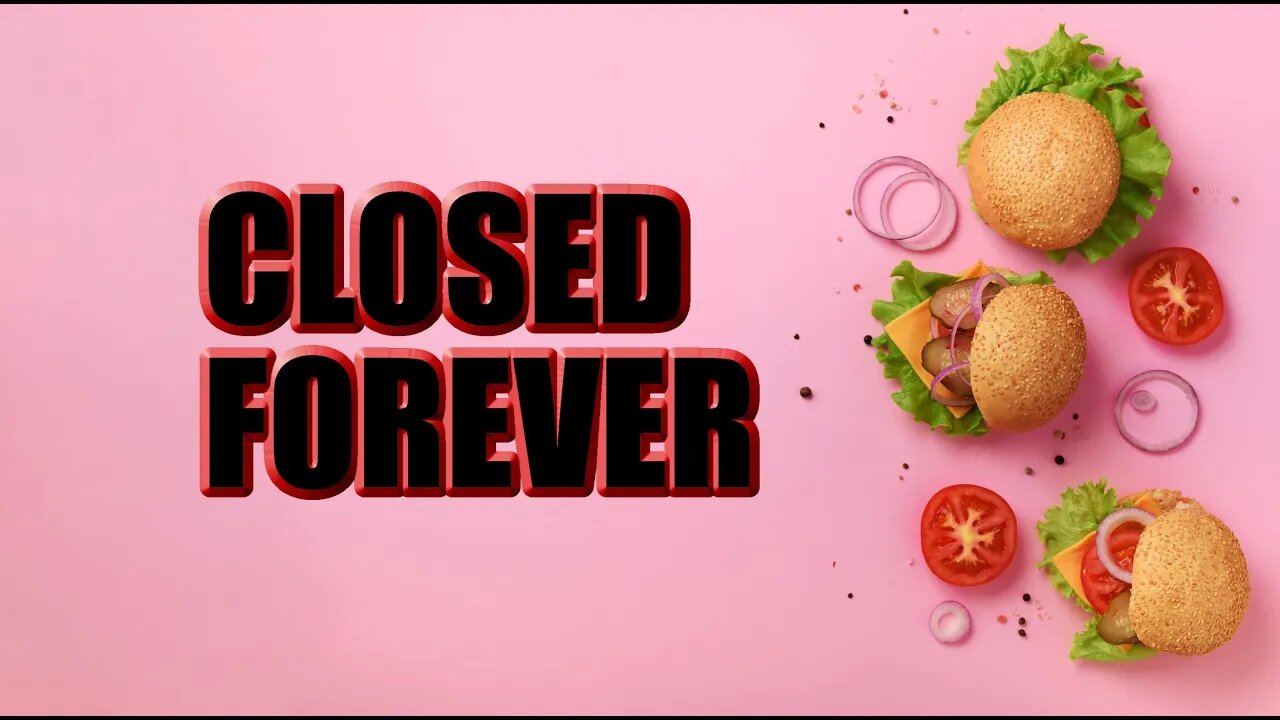Premium Only Content

Top 7 Reasons to NOT Buy a Food Franchise
Everyone thinks food franchises are enormously profitable. Some are! Most aren't. Top reasons you may not want to buy a food franchise, especially some of the big name brands.
According to a Franchise Business Review report, 51.5 percent of food franchises earn profits of less than $50,000 a year; only about 7 percent are over $250,000. The average profit for all restaurants coming in at $82,033. A very small number of food franchises create substantial profits and we see many owners are struggling or have bought themselves a job.
So what are some of the challenges today of owning a food franchise?
Huge investment. McDonalds $1,263,000 to $2,235,000, taco bell $1,179,525 - $2,851,775 burger king $1,877,600 $3,283,600, Tim Hortons $1,009,900 to $2,046,300. This does not include your real estate! People think "Oh I will just lease the building it will be cheaper" these are the costs with leasing, add in a few more million if you buy the building. So if the real estate is not included why are these franchises so expensive?
Just the improvements for a Burger King is between $900k-1m. Landscaping will be $25-$60k. Their Décor package is $45-$90k. Your inventory control and order taking system 35k - $110k, signage and drive through $66k-$166k, equipment is $199k - $294K, and we havent covered costs for your architectural drawings, zoning, insurance, working capital, pre-opening expenses - you get the idea. When you have a brick and mortar location, your expenses go way up. And when you have 2 million dollars invested you have to sell a lot of french fries to make that money back.
Remodeling. There is nothing worse than a dated looking restaurant. But as a franchise owner you pay for those updates. We always ask our clients to check the FDD for remodeling requirements. Most franchises require you to update your restaurant every few years. That cost is not cheap, usually in the $200,000 or higher range and the franchise legally obliges you to do so or be fined or even lose your franchise.
Highly competitive. Thousands of food franchises have entered the market over the past few years. You will be competing against other brands and your own brand. There has been a trend over the past few years in many major food franchises where we are seeing declining revenues year over year due to local competition. That brings us to the next problem, which is
Failure rates. We all know that growth can not continue forever. Franchises have a lifecycle, and we see strong and solid growth followed by a leveling off, and an eventual decline. The problem is most people, same as stocks, real estate, and investments in general, dive in at the height, just before the decline. Subway, arguably the most successful food franchise closed 2000 stores over the past few years. Some of the larger brands are likely in a similar situation where you have major market saturation and very few premium territories remaining.
Expensive rents. This may change in the coming months as we see stores closing. But as of the past few years rents have been at a premium across the country. In certain cities we have problems even finding a location, certain cities have 2-3% commercial vacancy rates. Many Food franchises require special venting and traffic counts and can be even more expensive to lease. With a food franchise, or any brick and mortar store you also may be on the hook for a multi year lease which is an obligation for hundreds of thousands of dollars that you may be asked to personally guarantee.
Years to achieve ROI. We have franchises we work with that have a low investment, around $70,000 and show ROI in 120 days on average. When you drop a million or two into the franchise, pay high rents, have 50 or more employees, your time to ROI is much longer.
It's not guaranteed. Many buyers have the misperception that the longer a franchise has been around the more secure your investment is. The failure statistics actually show only a variance of 2% between start up brands with 5 locations or less, emerging brands with 5-50 locations, and highly established brands. When you consider the upside of an emerging brand such as the ability to own the master franchise, better location availability, and other considerations, it can make sense to align with an emerging brand. Especially if you do go the food route.
#franchisecity #foodfranchises
-
 LIVE
LIVE
Nerdrotic
2 hours agoA Very Merry Christmas | FNT Square Up - Nerdrotic Nooner 453
1,101 watching -
 LIVE
LIVE
Tucker Carlson
2 hours ago“I’ll Win With or Without You,” Teamsters Union President Reveals Kamala Harris’s Famous Last Words
9,075 watching -
 LIVE
LIVE
The Dilley Show
2 hours agoTrump Conquering Western Hemisphere? w/Author Brenden Dilley 12/23/2024
3,438 watching -
 1:09:59
1:09:59
Geeks + Gamers
3 hours agoSonic 3 DESTROYS Mufasa And Disney, Naughty Dog Actress SLAMS Gamers Over Intergalactic
18.8K1 -
 51:59
51:59
The Dan Bongino Show
4 hours agoDemocrat Donor Admits The Scary Truth (Ep. 2393) - 12/23/2024
496K1.3K -
 2:32:15
2:32:15
Matt Kohrs
15 hours agoRumble CEO Chris Pavlovski Talks $775M Tether Partnership || The MK Show
83.5K23 -
 28:23
28:23
Dave Portnoy
15 hours agoDavey Day Trader Presented by Kraken - December 23, 2024
98K32 -
 59:29
59:29
BonginoReport
6 hours agoTrump, Murder Plots, and the Christmas Miracle: Evita + Jack Posobiec (Ep.110) - 12/23/2024
111K87 -
 2:59:14
2:59:14
Wendy Bell Radio
8 hours agoNothing To See Here
97.4K56 -
 2:12:18
2:12:18
TheDozenPodcast
1 day agoIslam vs Christianity: Bob of Speakers' Corner
93.9K23